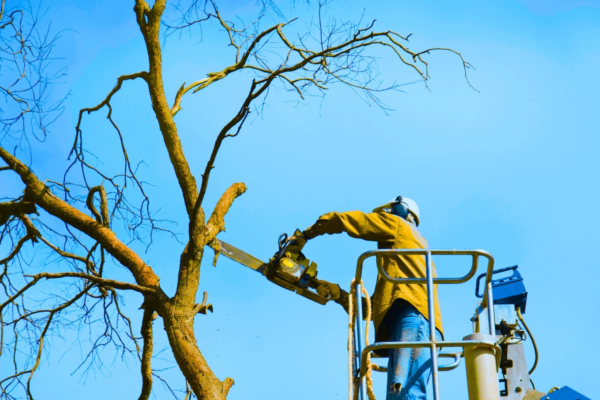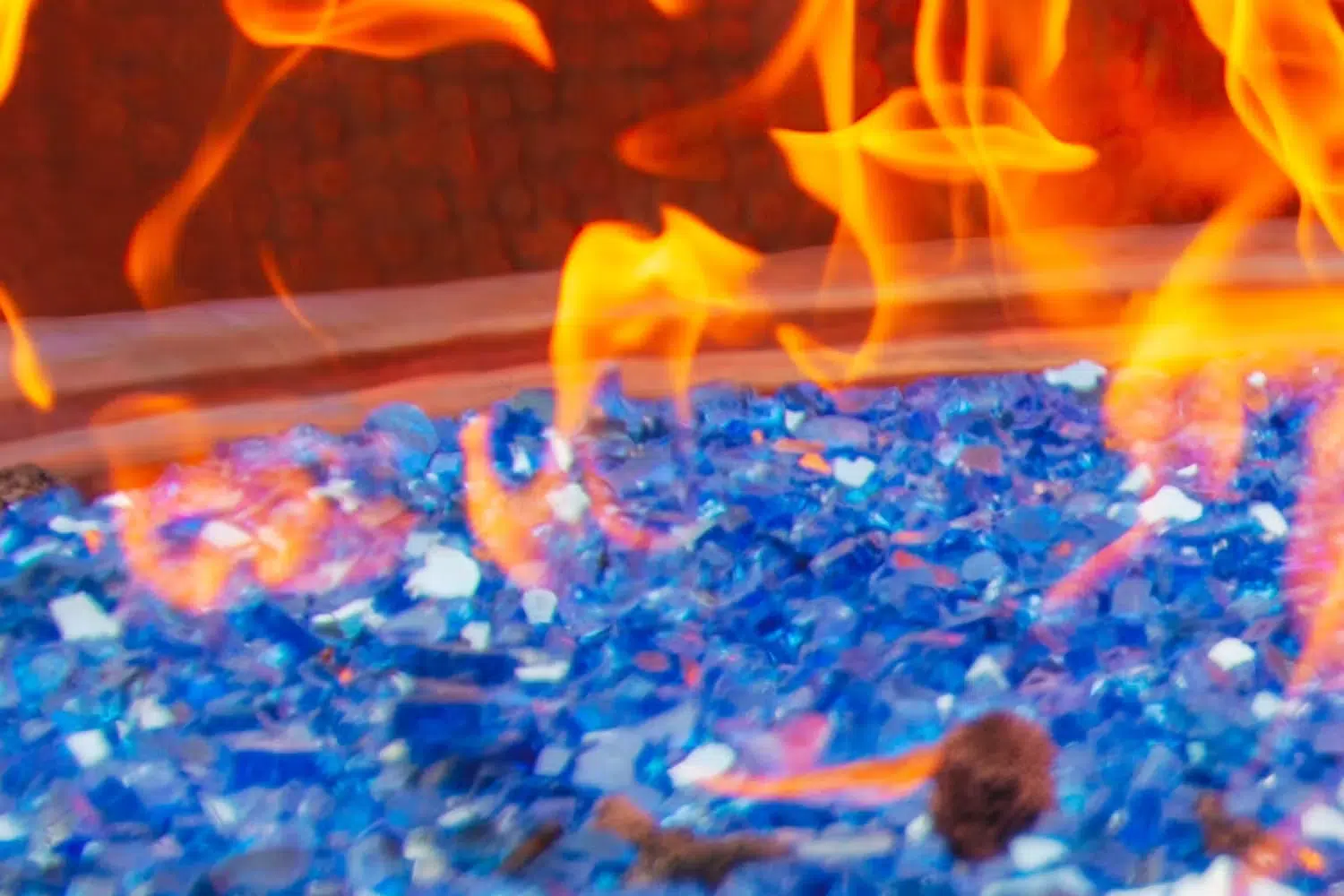
The Best Little Fireside in Texas: Fire Pit Safety Tips and Tricks

There’s something undeniably magical about gathering around a crackling fire pit on a Texas evening. The flickering flames dance in harmony, casting a warm glow that brings people together. Whether it’s roasting marshmallows, sharing stories, or simply enjoying the comforting ambiance, fire pits have become an essential part of outdoor living in Texas.
However, amid the allure of the fireside experience, it’s crucial to keep safety at the forefront. The last thing anyone wants is for a delightful evening to turn into a disaster. By adhering to fire pit safety tips and tricks, you can ensure that your little Texas firepit remains a haven of warmth, laughter, and cherished memories.
Choosing the Best Backyard Firepit
Fire pit safety starts with choosing the right fire pit for your backyard oasis, so let’s go over some of the basics.
Open Burn vs. Recreational Fire
First and foremost, it’s important to understand the difference between a recreational fire and an open burn.
Open burns are essentially uncontrolled fires conducted without any containment structures. Burning a large pile of tree trimmings, for example, would be considered an open burn.
While open burns may be traditional and lower cost, they pose higher risks, especially in populated areas. This is why many cities and towns across the state have strict ordinances against open burns or require a permit to burn openly.
Recreational fire pits, on the other hand, are purpose-built structures designed specifically for controlled fires. These fire pits provide a safer and more enjoyable experience for everyone involved. By confining the fire within the fire pit, they help reduce the likelihood of accidents and ensure a controlled burn.
A Home Equity Loan Can Make It Happen
Our local, award-winning lending team is ready to help you begin today.
Portable Fire Pits vs. Permanent Fire Pits
When it comes to fire pits, you have the option of choosing between portable and permanent designs.
Portable fire pits offer convenience and flexibility. They can be easily moved and positioned in different areas of your yard or even taken on camping trips. Portable fire pits come in a variety of designs and sizes, allowing you to find the perfect fit for your outdoor space. They are also the most budget-friendly option.
Permanent fire pits, on the other hand, are installed fixtures in your outdoor space, offering long-term benefits. They are often made of durable materials such as stone or metal, providing both aesthetic appeal and functionality. Permanent fire pits can become a focal point in your backyard, enhancing the overall ambiance.
If you’re considering a permanent fire pit but don’t have the cash on hand, financing these home improvements can be a viable option. Home equity loan products— such as a home equity loan or home equity line of credit— can help you fund the project while providing attractive interest rates and repayment terms. At Amplify, our real estate experts can help you find the best loan product for your home improvement projects, big or small!
Wood Pits vs. Gas-Fire Pits
When it comes to fuel options for fire pits, you have a choice between wood-fired and gas fire pits.
Wood-fired fire pits rely on burning wood logs or firewood as their fuel source. They offer a traditional and authentic fireside experience, with the crackling sound and aromatic scent of burning wood. However, wood-fired fire pits require proper storage of firewood, ensuring it is dry and seasoned for efficient burning. Ventilation is also crucial to allow proper airflow and prevent excessive smoke.
Gas fire pits, on the other hand, utilize propane or natural gas as their fuel source. These fire pits offer instant ignition and controllable flames at the flip of a switch. Gas fire pits are generally considered safer as there is no need to handle or store firewood, reducing the risk of sparks or accidental fires. Additionally, gas fire pits do not produce smoke, making them a cleaner and low-maintenance option.
When considering safety and convenience, gas fire pits have advantages such as precise flame control and easy extinguishing. Wood-fired fire pits provide a classic and cozy ambiance but require additional precautions.
How to Build a Backyard Firepit and Enjoy It Safely
Once you’ve picked out the right fire pit, keep the following tips in mind when building and operating.
1. Consider the location of your fire pit.
The placement of your fire pit is important. Select a safe location that is away from any structures, including your house, sheds, trees, or other flammable materials.
Additionally, ensure that there is proper ventilation and airflow around the fire pit. Adequate airflow is essential for efficient combustion and the prevention of excessive smoke or carbon monoxide buildup. Avoid placing the fire pit in enclosed or poorly ventilated areas, as this can lead to dangerous conditions.
Regularly assess the surroundings for any potential fire hazards. Clear the area of dry leaves, debris, or flammable materials that could ignite if sparks land on them. It’s important to create a safe zone around the fire pit, ensuring that there are no potential fuel sources nearby.
2. Be specific about what you burn.
Opt for seasoned firewood or manufactured fire logs designed specifically for outdoor use.
Never burn treated wood, painted wood, trash, leaves, or any flammable liquids in your fire pit. Treated wood contains chemicals that can release toxic fumes when burned, posing health risks to those nearby. Similarly, burning trash or leaves can lead to uncontrollable fires or sparks.
3. Keep your fire covered.
By utilizing a fire pit cover or spark screen, you can prevent sparks and embers from escaping and potentially igniting nearby objects or vegetation. A fire pit cover acts as a barrier, containing the flames within the pit and minimizing the risk of accidents.
4. Always properly extinguish your fire.
One of the most crucial fire pit safety tips is to always extinguish your fire before leaving the area. Never leave a fire unattended or smoldering, as this poses significant risks. Even a small ember can reignite and potentially cause a fire to spread, endangering property and lives.
To ensure the fire is fully extinguished, follow proper methods. For wood fires, the most common method is to use water. Slowly pour water over the fire, ensuring that all flames and embers are thoroughly doused. Stir the ashes and remaining wood to ensure complete saturation. This helps cool down the fire pit and eliminates any remaining heat.
5. Practice situational awareness.
Maintaining situational awareness is essential for fire pit safety. It involves actively monitoring the fire and being aware of potential risks in the surroundings. Keep the following tips in mind:
- Keep a close eye on the fire at all times.
- Avoid leaving the fire unattended, even for short periods.
- Ensure that children and pets are supervised and kept at a safe distance from the fire pit.
- Be cautious of wind conditions. Strong gusts of wind can affect the flames, causing them to grow larger or blow sparks outside the fire pit.
Even the simplest of precautions can go a long way in preventing an accident or tragedy!
Creating the Best Texas Firepit
An evening around the fire is always a memorable one— but safety should always be at the forefront of your experience. By choosing the right fire pit and implementing the fire pit safety tips and tricks we discussed, you can ensure that your fireside gatherings are enjoyable and incident-free!
Want to add a custom fire pit to your home?
Contact our team to learn how a home equity loan or HELOC could fund your project.


